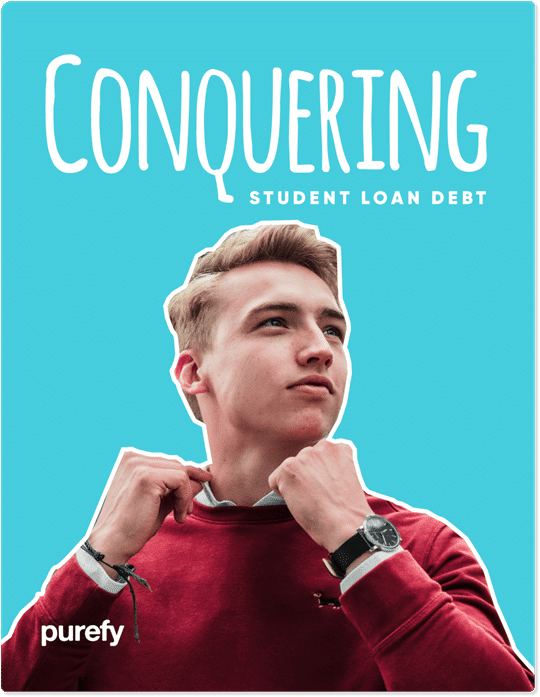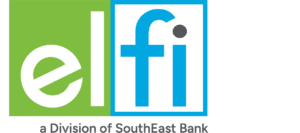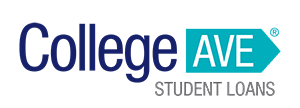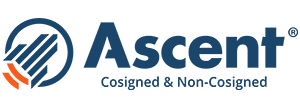All good things come to an end. Since March 2020, federal loan borrowers haven’t had to make any loan payments, and no interest accrued on their loans either. However, the CARES Act’s student loan relief provisions are scheduled to end on January 31, 2022, and payments will restart after that date.
With repayment creeping closer every day, you may be overwhelmed and worried about affording your payments. But with a little planning now, you can prepare for repayment to begin and minimize your stress.
How the CARES Act affected federal student loans
The COVID-19 pandemic hurt the finances of millions of people, making it difficult to make ends meet. To help those impacted by job losses or reductions of income, then-President Trump passed the CARES Act on March 13, 2020. The relief measures for student loan borrowers were significant, offering the following provisions:
Suspended payments
The most significant part of the CARES Act was the student loan payment suspension. Payments on eligible loans were paused; eligible borrowers haven’t had to make any payments since March 2020.
The average student loan payment is $393 per month, so the federal student loan freeze freed up that money to cover other expenses, like rent, health insurance, and groceries.
Student loan interest pause
The interest rate on all eligible federal loans was set to 0%, meaning no interest would accrue as long as the relief measures remained in effect.
For borrowers, that was a significant benefit. If they couldn’t afford to make payments, they could enjoy the suspended payment period without worrying about accrued interest charges.
For borrowers that were still financially stable, it offered an excellent opportunity to chip away at their debt. At 0% interest, any payments they made went entirely to the loan’s principal.

Free eBook: How to Conquer Student Loans
Free eBook: How to Conquer Student Loans

Paused collections on defaulted loans
For borrowers in default, the CARES Act’s student loan measures paused collection efforts. During the designated emergency relief period, debt collectors couldn’t contact borrowers, and they couldn’t seize borrowers’ tax refunds or Social Security benefits, nor could they garnish borrowers’ wages to recoup the money owed.
Loan forgiveness
If you are enrolled in an income-driven repayment (IDR) plan or are pursuing Public Service Loan Forgiveness (PSLF), the CARES Act had a significant impact on your forgiveness plans. Under the CARES Act, every month of the emergency relief period — when loan payments were paused — counted toward the number of payments required for loan forgiveness.
Every payment that was originally scheduled during the time of the student loan freeze would count as a qualifying payment toward both IDR loan discharge and PSLF. Borrowers wouldn’t have to make payments but would still make progress to having their loan balance forgiven.
What loans qualified for the CARES Act’s benefits?
Not all borrowers were eligible for the CARES Act’s student loan relief provisions. Initially, the CARES Act only applied to federal Direct loan borrowers and people that had FFEL loans owned by the Department of Education (ED). However, the CARES Act was expanded to include more federal loan types:
- Direct Subsidized Loans
- Direct Unsubsidized Loans
- Parent PLUS Loans
- Grad PLUS Loans
- Direct Consolidation Loans
- ED-owned FFEL loans
- Non-ED-owned FFEL loans in default
- ED-owned Federal Perkins Loans
- Defaulted HEAL Loans
Borrowers with the following loan types were ineligible for the CARES Act’s protections:
- Non-defaulted FFEL Loans not owned by the ED
- Federal Perkins Loans not owned by the ED
- Non-defaulted HEAL Loans
- Private student loans
While some private student loan companies offered their own financial hardship programs, the ED has no legal authority over private lenders, and they were not required to follow the CARES Act’s provisions.
How many student loan borrowers were impacted by the CARES Act?
Considering that nearly half of people that attend college use student loans to pay for school, the impact of the CARES Act was substantial. As of March 2021 — the last time data was released by the ED — there were 42.9 million borrowers with outstanding federal loans, totaling $1.59 trillion. According to the latest student loan statistics, the average balance for borrowers is $29,650.
To demonstrate how powerful the CARES Act was for borrowers, check out the data for the Direct Loan program. As of June 2021, there were over 23 million Direct loan borrowers in forbearance, and 99% of those balances were in forbearance due to the CARES Act. Only a tiny number of borrowers — just 500,000 people — opted out of the payment pause and entered repayment.
When does the federal student loan pause end?
While the CARES Act student loan relief measures were originally supposed to end in 2020, it was extended by Trump and extended again once President Biden took office. Now, the CARES Act’s student loan protections are scheduled to end on January 31, 2022.
The 2 Best Companies to Refinance Student Loans
Our Top-Rated Picks for 2024 Offer Low Rates and No Fees

What’s next for federal student loan borrowers?
With borrowers getting ready to make payments on their student loans again, many people are wondering about the status of student loan forgiveness initiatives.
During Biden’s campaign for the presidency, he promised $10,000 of loan forgiveness per federal loan borrower. He also said he would eliminate the student loan debt of students that attended public colleges and Historically Black Colleges and Universities (HBCUs).
However, there hasn’t been any progress to make those promises a reality.
Status of loan forgiveness proposals
Many politicians have lobbied for student loan forgiveness for amounts higher than Biden discussed during his campaign. For example, Senator Warren is encouraging Biden to eliminate $50,000 of federal loans per borrower.
In the past, President Biden has said that he doesn’t support $50,000 of loan forgiveness. And House Speaker Nancy Pelosi said that Biden doesn’t have the authority to issue an executive order forgiving $50,000 of debt; she said any forgiveness proposals would have to be carried out by Congress.
Changes to how student loan forgiveness is taxed
In March, President Biden signed the American Rescue Plan into law. While this plan didn’t offer the much-hoped-for loan forgiveness borrowers wanted, it did make a major change to how student loan forgiveness is taxed.
Under the new law, loan balances forgiven through PSLF, IDR repayment, or other programs wouldn’t be taxable as income.
What you need to know about federal loan repayment
With the end of the CARES Act, student loans will become another thing you have to worry about. As January 2022 gets closer, keep these three important details in mind:
You can request a refund of your payments
If you’re struggling to pay your bills, there may be a way to get some cash back. If you’ve made payments toward your federal loans since the CARES Act was passed on March 13, 2020, you can get that refunded to you, helping you handle your other bills or establish an emergency fund — or stay current on your student loan payments once they restart.
To request a refund, contact your loan servicer. The process can take a few weeks, but your servicer will send you a check for the amount you paid, or they may send the money directly to your bank account through electronic transfers.
Automatic payments will be deducted on your first due date
Once the suspension ends, your servicer should send you a billing statement or other notice at least 21 days before your payment is due. However, your student loan payment due dates may still sneak up on you. Automatic payments will resume on the first due date after the CARES Act expires.
If you need to adjust your payment date or have issues with automatic payments, contact your student loan servicer.
Your expected loan payoff date was likely changed
Depending on the type of repayment plan you’re on, you may carry your debt even longer, thanks to the CARES Act.
If you’re on a standard, extended, or graduated payment plan, the CARES Act paused your payment schedule. You’ll still make the same number of payments, but your final payoff date will be pushed back.
For example, let’s say your loans entered repayment in January 2018 and were on a 10-year standard repayment plan. If everything had gone to plan and you made the minimum payments on their due dates, you would have paid off your loans by December 31, 2028.
With the CARES Act, your loans were paused. If the total federal loan freeze lasted for 18 months, you wouldn’t pay off your debt until June 31, 2029.
If you are enrolled in an IDR plan, your progress was not delayed even though payments were paused. Every month of the student loan freeze counts toward the required 20 or 25 years of payments, making it more likely that you will have a balance eligible for forgiveness at the end of your repayment term.
7 ways to prepare for the end of the student loan freeze
Unfortunately, the CARES Act’s student loan provisions will eventually end. Your payments will resume, and interest will accrue again. If you’re stressed about your debt, here are seven things you can do now to prepare for repayment to begin:
1. Consider student loan refinancing
Depending on your financial situation and goals, student loan refinancing may be an effective way to tackle your debt.
If you’re researching how to lower student loan interest rates, refinancing is the answer. You can refinance both federal and private student loans, and based on your credit, potentially qualify for a lower interest rate. Or, you can opt for a longer loan term to get a smaller monthly payment and more room in your budget.
Interested in Student Loan Refinancing? Compare rates from top-rated lenders and see how much you could save.
Checking your rates takes 2 minutes and has no impact on credit.
2. Update your account information
Since payments haven’t been required since March 2020, it’s likely been a while since you logged into your federal loan accounts. If any of your information has changed over the past 18 months, such as a new address or email account, make sure you update your account information so that your loan servicers can send you updates and notifications.
3. Contact your loan servicer
If you have any questions about your account, loan status, or payments, contact your loan servicer directly. Below is the contact information for the current federal loan servicers:
- Fedloan Servicing/PHEAA: 800-6992908
- Granite State Management and Resources: 888-556-0022
- Great Lakes Education Loan Services: 800-236-4300
- HESC/EdFinancial: 855-337-6884
- MOHELA: 888-866-4352
- Navient: 800-722-1300
- Nelnet: 888-486-4722
- OSLA Servicing: 866-264-9762
- ECSI: 866-313-3797
- Default Resolution Group/Maximus Federal Services: 1-800-621-3115 (TTY: 1-877-825-9923 for the deaf or hard of hearing)
4. Think about income-driven repayment plans
If your budget is stretched to the max right now, you may not be able to afford your current student loan payments. If you’re on a 10-year standard repayment plan and are trying to figure out how to lower student loan payments, an IDR can be a useful solution.
Under an IDR plan, the loan servicer will recalculate your monthly payment based on a percentage of your discretionary income and an extended loan term. Depending on your income and family size, you could slash your payments, freeing up more cash for your other bills. Some borrowers even qualify for $0 payments, and they can stay current on their loans — and avoid default — without having to pay anything.
5. Recertify your income if it changed
If you’re already on an IDR plan, you know that you have to recertify your income every year. However, you may not know that you can recertify your status early if there have been any changes, like having a baby or a decrease in your salary due to pay cuts.
By adjusting your information ahead of schedule, you can qualify for a lower payment once the CARES Act payment suspension ends.
It only takes a few minutes to update your information, and you can recertify your payment plan online.
6. Apply for forbearance or deferment
In some cases, you may not be able to afford your payments after the CARES Act’s provisions end. Whether you’re unemployed, have a medical emergency, or another financial hardship, contact your loan servicer to discuss your options.
Federal loan borrowers may qualify for loan forbearance or deferment, programs that allow you to temporarily postpone your payments while you recover.
7. Review your eligibility for PSLF with reduced hours
If you were planning on applying for PSLF but lost your job or your hours were cut, you may think that you’re no longer eligible. However, that may not be the case.
To qualify for PSLF, you must work full-time for a qualifying employer. But full-time employment for PSLF purposes may be different than you think; the government defines full-time employment for PSLF as working 30 hours per week or what your employer considers full-time status, whichever is greater.
But what about if your hours were reduced, and you got a second job to make up the difference? You can meet the PSLF full-time requirement by working two or more jobs, as long as all of your employers are government agencies or non-profit organizations.
You can check your eligibility for PSLF with the Federal Student Aid PSLF Help Tool.
3 Times when refinancing federal loans makes sense
Refinancing your debt can be a smart idea, but it’s not for everyone. If you have federal loans, there are some major drawbacks. After you refinance, your federal loans become private ones, and you’ll no longer be eligible for federal benefits — including the CARES Act’s measures if they’re extended or federal loan forgiveness if that comes later on.
After weighing the pros and cons of refinancing, you may decide that refinancing makes sense. Below are four examples of situations where refinancing could be a good decision:
1. You have a high interest rate
Depending on the type of loans you have and the year you took them out, you could have a very high interest rate. In the past, federal loans have had rates as high as 8.5%.
Such a large rate can cause you to pay thousands in interest charges, and it can be difficult to get out from under your debt.
Right now, student loan refinancing lenders are offering some of the lowest rates ever; fixed-rate loans are as low as 2.5%. Refinancing your loans can allow you to secure a lower rate and save money.
For example, Janet had $30,000 in student loans at 8.5% in interest and a 10-year repayment term. By the end of her loan term, she paid $14,635 in interest charges.
Donna also had $30,000 in student loans at 8.5% interest and a 10-year repayment term. However, Donna decided to refinance her loans and qualified for a 10-year loan at 5% interest. With her lower rate, she paid just $8,184 in interest charges — a savings of over $6,400 compared to Janet.
2. You want to transfer Parent PLUS Loans to your child
If you took out Parent PLUS Loans to help your child pay for their undergraduate degree, you might be struggling to keep up with the payments. If your child is working and financially stable, they may be willing to take over the debt.
Parent PLUS Loans cannot be transferred to child borrowers through the federal loan system. However, parent loan refinancing is an effective workaround. Some lenders allow parents to refinance and transfer the loans to the child as long as the child agrees and meets the lender’s borrower requirements in terms of income and credit score.
After refinancing your Parent PLUS Loans, you’ll no longer be responsible for the debt.
3. You have a large loan balance
Some borrowers worry about refinancing because they don’t want to miss out on future loan forgiveness initiatives. But if you’re one of the 6% of borrowers that owe $100,000 or more, you can refinance just a portion of your debt. With that approach, you can refinance your most expensive loans but leave the rest as federal loans so they’ll qualify for any future forgiveness programs that may be available.
For example, Jerry earned a Master of Business Administration (MBA) and left school with $120,000 of debt. Jerry thinks that it’s likely that $50,000 of loan forgiveness per borrower will happen in the next couple of years, but he wants to pay off the rest of his debt as quickly as possible — and save money.
To achieve those goals, he decides to refinance $70,000 of his loans that have the highest interest rates — his Grad PLUS Loans. The remaining $50,000 is lower-interest debt from his undergraduate degree, and he will continue making the minimum payments on those loans and hope that loan forgiveness becomes a reality.
This hybrid approach allows borrowers to accelerate repayment of the highest-interest debt while still making it possible to take advantage in the future.
Getting ready for student loan repayment
Since March 13, 2021, federal loan borrowers haven’t had to pay attention to their loans because of the CARES Act’s payment suspension and interest waiver. However, it looks like the emergency relief period may come to an end, and borrowers will have to start making payments again beginning February 1, 2022. By reviewing your finances now, you can come up with a plan to manage your debt so you’re not scrambling at the last minute.
If you decide to refinance some or all of your loans, use Purefy’s Compare Rates tool to get quotes from top lenders.



















